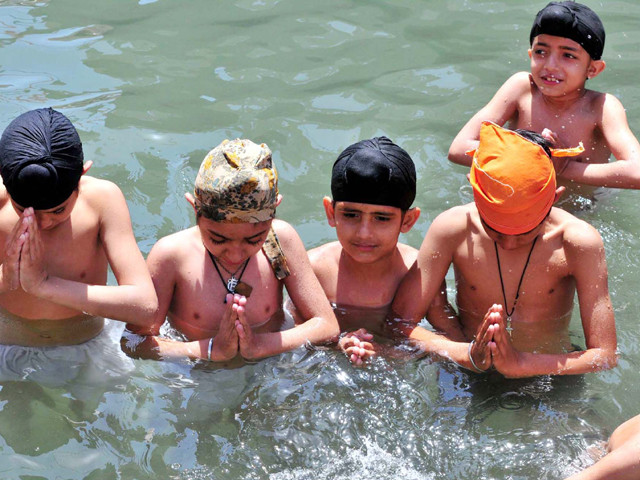
Although earlier Mughal emperors had a relatively peaceful relationship with the Sikh Gurus, Emperor Jahangir changed all that by ordering the arrest and eventual execution of Guru Arjan Dev, the fifth Guru, in 1606. Though considered a religious moderate, Jahangir was believed to be threatened by the growth of the Sikh faith, especially the number of Muslim converts.
In 1675, Guru Tegh Bahadur, the ninth Sikh Guru, was executed by Jahangir’s grandson Emperor Aurangzeb, a more conservative Muslim who famously overthrew his own more liberal father.
In 1699, as Sikhs from all over the Punjab gathered at Anandpur to celebrate the Hindu harvest festival of Baisakhi, Tegh Bahadur’s son, and the tenth Guru, Gobind Singh, decided to establish a military order to resist Aurangzeb’s army.
As the story goes, Guru Gobind Singh came out of his tent with a sword and asked for any man willing to die for his faith to step forward.
One young man did, and went into the Guru’s tent with him. Minutes later, the Guru emerged alone, with blood dripping from his sword. He then asked for another volunteer, with the same result.
Five men had gone in without returning, leaving others in attendance worried until eventually Guru Gobind Singh brought out all five men alive, and wearing turbans.
These five men are known as the Panj Piare, or Beloved Five. They were then baptised into the Khalsa by the Guru, sprinkled amrit over them while reciting prayers.
Published in The Express Tribune, April 13th, 2011.


















COMMENTS
Comments are moderated and generally will be posted if they are on-topic and not abusive.
For more information, please see our Comments FAQ